On the Arizona Strip, Now is the Time for Fire and Fuels Work
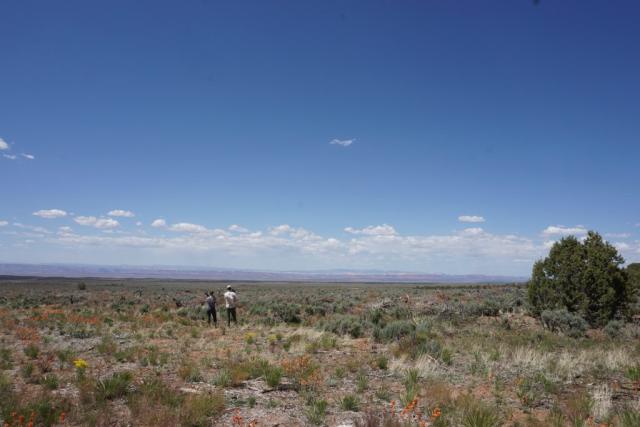
This story was written by our esteemed partners at Intermountain West Joint Venture and also appears on the IWJV website.
When it comes to the desert southwest, the Arizona Strip is entirely its own place. Everything north of the Grand Canyon (or “the Big Ditch,” as locals call it) and south of Utah, including 3.1 million acres of Bureau of Land Management land, is geographically isolated, sparsely populated, and culturally unique. It doesn’t totally identify with either Utah or Arizona. The whole place is just, well, different from everywhere else.
The wildlife is distinct, for one thing. The Strip includes parts of the Mojave Desert at its western end, but also high-elevation pine forests at its eastern end. As a result, animals from Gambel’s quail to pronghorn to desert big horn sheep call this area home, as does the world-famous Kaibab Plateau population of mule deer. Not only does this area produce top-tier bucks (look up game unit 13b for some incredible grip-and-grins), but it’s also the second-longest mule deer migratory corridor in the United States.
“Effective habitat management requires balancing the needs of these species with historic conditions and future conservation goals,” said Andrew Cavalcant, the Habitat Partnership Committee Coordinator for the Arizona Game and Fish Department. “While this approach isn’t exclusive to the Arizona Strip, the specific challenges and factors we navigate on the Arizona Strip are truly one-of-a-kind.”
Wildfires on the Arizona Strip look a little different, too. They occur miles from large population centers, yet they can still significantly threaten resources like forests and forage for livestock and wildlife. More than a century of suppressing wildfires has resulted in a steady forward march of native conifer trees into native grassland and sage-steppe habitats. On the Strip, this build-up of fuels makes fires get big quickly, become more destructive, and are incredibly expensive to fight.
So what do you do, as a land manager, when you’re faced with defending this much sheer space from devastating and increasingly extreme fire cycles? For partners on the Arizona Strip, an ounce of prevention is worth a pound of cure, and proactive fuels management is the name of the game.
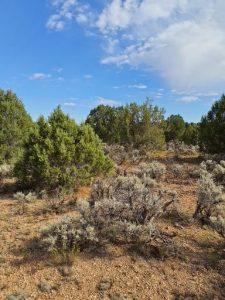

That proactive fuels management is at the heart of Jordan Menge’s work. Menge is employed as a partner position between the Bureau of Land Management, Pheasants Forever, and the Intermountain West Joint Venture on the Arizona Strip. In his role, he coordinates with multiple partners to do vegetation treatment and habitat enhancement work. The result of his work is a mosaic of tens of thousands of acres of conifer removal projects where pinyon-juniper woodlands have expanded into and deteriorated sagebrush habitat.
“We’re losing diversity on the landscape and we’re losing our native plant species, our grasses and forbs that we should have in pinyon-juniper woodlands and sagebrush habitats,” Menge said. “Expanding pinyon-juniper is limiting the availability for these other species to thrive on the landscape.”
But because pinyon-juniper woodlands support species like the pinyon jay, Menge said there’s a balance to strike with these projects. It’s more than just masticating trees to benefit sagebrush habitat. Menge and BLM staff are using their expertise to strategically remove the trees that are drowning out the native grasses and forbs needed by wildlife, but still leave the right trees in the right places. The result is a more complex landscape that provides cover for animals like mule deer and supports woodland-dependant species like pinyon jay while reducing fuels and benefitting sagebrush habitat.
“We’re trying to include all the diverse aspects of the woodlands they need for their life cycle and trying to be beneficial to all the wildlife out on the landscape,” he said.
Take, for example, the recently completed Wildcat Landscape Restoration project. Prior to cutting a single tree on the 920-acre project’s Ranch House and Salt House units, Menge worked with specialists from the BLM and partners from the Arizona Game and Fish Department, as well as the permittee, to determine where cutting trees would benefit wildlife, as well as the rancher’s grazing leases. Then, he worked with the contractor to figure out where treatment made sense and where it didn’t, based on the contractor’s expertise and his own knowledge of the area.
“When you get out there, there could be a really rocky spot where we don’t want them to destroy their machines, for example, and that could be a solid spot to leave trees [for pinyon jays] while we cut trees around that area,” he said. “Those trees also help provide cover for mule deer, which don’t want to always move out in the open but need the meadows for forage.”
Implementing projects with that kind of nuance is a delicate dance, one that takes local expertise and on-the-ground knowledge. That’s a niche filled by Menge and the local contractors he works with, as well as by BLM and Arizona Game and Fish Department field office staff and the livestock producers they work with. Kyle Dutro, the Habitat Enhancement Program Coordinator for the Arizona Game and Fish Department, said that working at that local level is super important.
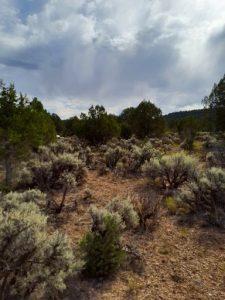

“In order for habitat restoration projects like this to be successful, the partners need to balance the unique perspectives of the wildlife agencies, the land management agency, and the livestock permittee to ensure mutually beneficial outcomes,” he said. “Without strong partnerships among these stakeholders, these projects rarely gain momentum or are as successful as they could have been.”
But these projects also need funding—and that’s where regional partnerships come into play. Jackson Gregory, who was the statewide BLM Partnership Coordinator in Arizona, said that engaging with regional partnerships like Pheasants Forever or the Mule Deer Foundation that care about the same goals is important because they can pull funding from different sources.
“Being able to bring in funding sources that aren’t limited by the same requirements [federal funding faces] can be a huge benefit, ” Gregory said. “When NGOs and other partners outside of the federal agencies are involved, it definitely increases productivity in a few ways.”
Without positions like Gregory’s that can act as a go-between among multiple partners, opportunities to collaborate are missed and project work becomes more expensive and time-consuming for everyone involved.
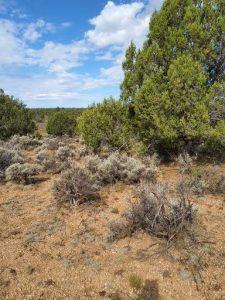
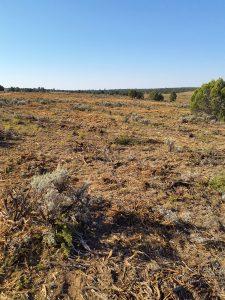
“We have so many people doing work right next to each other, doing the same work, accomplishing the same goals but calling it two different things,” Gregory said. “And that verbiage can create a barrier between the financial benefits and the conservation benefits that arise from these partnerships.”
Across such an enormous landscape, especially with wildfires occurring at unprecedented sizes and costs, efficiency in project implementation is increasingly necessary. Without that coordination among multiple entities at local, state, and regional levels, the work would be nonexistent, Menge said, or just take a lot more time to happen.
“This all-hands-on-deck approach allows us to accomplish what we need to accomplish in a shorter amount of time,” he said. “Our opportunity for this work is now. There’s a need for conifer removal projects on the Arizona Strip, and in the last 5-10 years, we’ve got momentum. Now is the time to do this work.”
Emily Downing, Intermountain West Joint Venture
Related Stories
- Aerial Sagebrush Seeding Helps Restore Robertson Draw Fire Burn Area
- Aerial sagebrush seeding helps restore Robertson Draw Fire burn area
- A day on patrol with BLM Arizona Ranger Rocco Jackson
- Celebrating volunteers across the Colorado River District
- Long-term partnership between BLM Fire and United States Air Force builds national firefighting capacity and accomplishes critical fuels work
